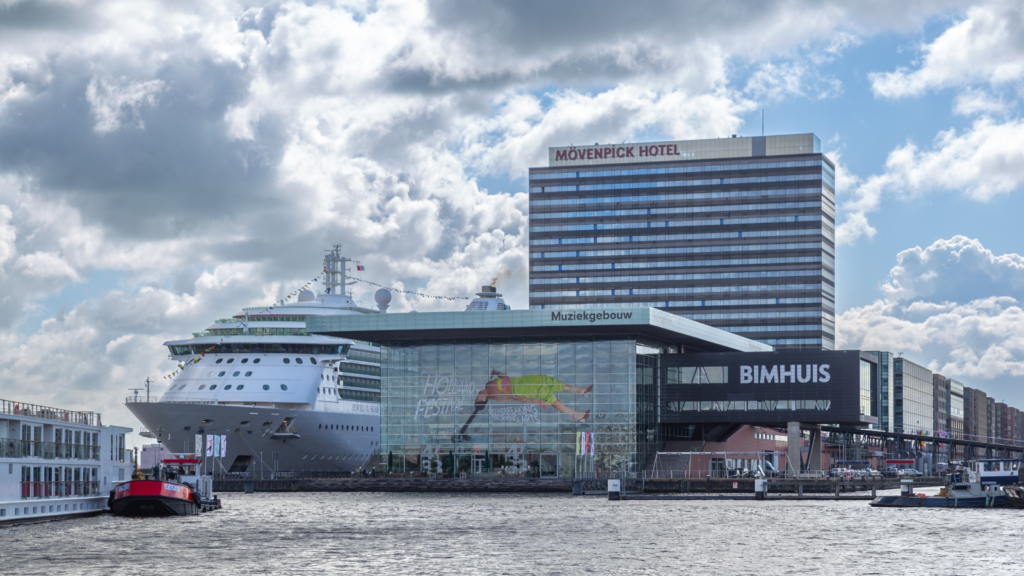The city of Amsterdam has embarked on a pivotal decision to relocate its cruise terminal out of the city centre by 2035. This move aims to address the challenges of over-tourism and environmental concerns impacting the urban landscape.
Rationale Behind the Relocation
In response to increasing concerns over tourism and its environmental repercussions, Amsterdam’s city council has decided to shift the cruise terminal from its central location by 2035. This strategic decision aims to alleviate the nuisance and environmental stress caused by large cruise ships, which currently contribute significantly to the city’s emissions and overcrowding.
Alderman Hester van Buren emphasized the city’s vision for a “liveable, clean and sustainable” Amsterdam. She stated that the cruise industry, while economically beneficial, imposes severe and palpable pressures on the city’s infrastructure and residents.
Reduction in Docking Ships by 2026
The city council plans to nearly halve the number of docking cruise ships by 2026, from 190 to 100 per annum. This measure is part of a broader effort to control tourism growth sustainably and reduce the associated nuisances.
By 2027, the Passenger Terminal Amsterdam (PTA) will be limited to one berth, and ships will be mandated to utilize shore power to minimize emissions. These actions represent the city’s commitment to balancing economic interests with sustainability.
Collaboration with Rotterdam
Adjacent city Rotterdam is set to absorb more than 40 ships that Amsterdam will no longer accommodate post-2026.
This collaboration underscores a regional approach to managing cruise tourism, leveraging Rotterdam’s capacity to support larger vessels while relieving Amsterdam of its current maritime burden.
Industry Perspective and Economic Implications
According to a spokesperson from the Cruise Lines International Association (CLIA), the relocation exemplifies the industry’s partnership with the Port of Amsterdam. Discussions concerning the terminal’s move began in 2016 and reflect ongoing cooperative efforts to meet urban and environmental needs.
Despite changes, Amsterdam remains a sought-after destination, contributing an estimated €105 million annually through cruise tourism. Notably, only about 1% of its 21 million annual visitors arrive by cruise ship, highlighting its broader appeal beyond maritime tourism.
Environmental and Social Considerations
Environmental sustainability is a focal point of Amsterdam’s new strategy, with an emphasis on reducing emissions and enhancing air quality.
The shift is part of a comprehensive plan to address urban living standards, ensuring residents’ quality of life is not compromised by tourism-related activities.
Navigating the Transition
The journey to a less cruise-reliant Amsterdam involves meticulous planning and stakeholder engagement. Regulatory frameworks are being developed to ensure a seamless transition.
Residents and businesses, particularly those dependent on cruise tourism, are being consulted to mitigate economic disruptions, with a focus on alternative employment opportunities.
Future of Cruise Tourism in Amsterdam
While the terminal moves and restrictions increase, Amsterdam’s allure as a pivotal maritime location remains intact. The ongoing adjustments signify a shift towards a more sustainable tourism model that prioritizes environmental integrity and urban wellbeing.
Amsterdam’s commitment to relocating its cruise terminal and reducing docking numbers is a major step in fostering a sustainable, balanced tourism model. The city’s plan ensures that it remains a vibrant yet habitable destination, attracting visitors while protecting residents’ quality of life.

